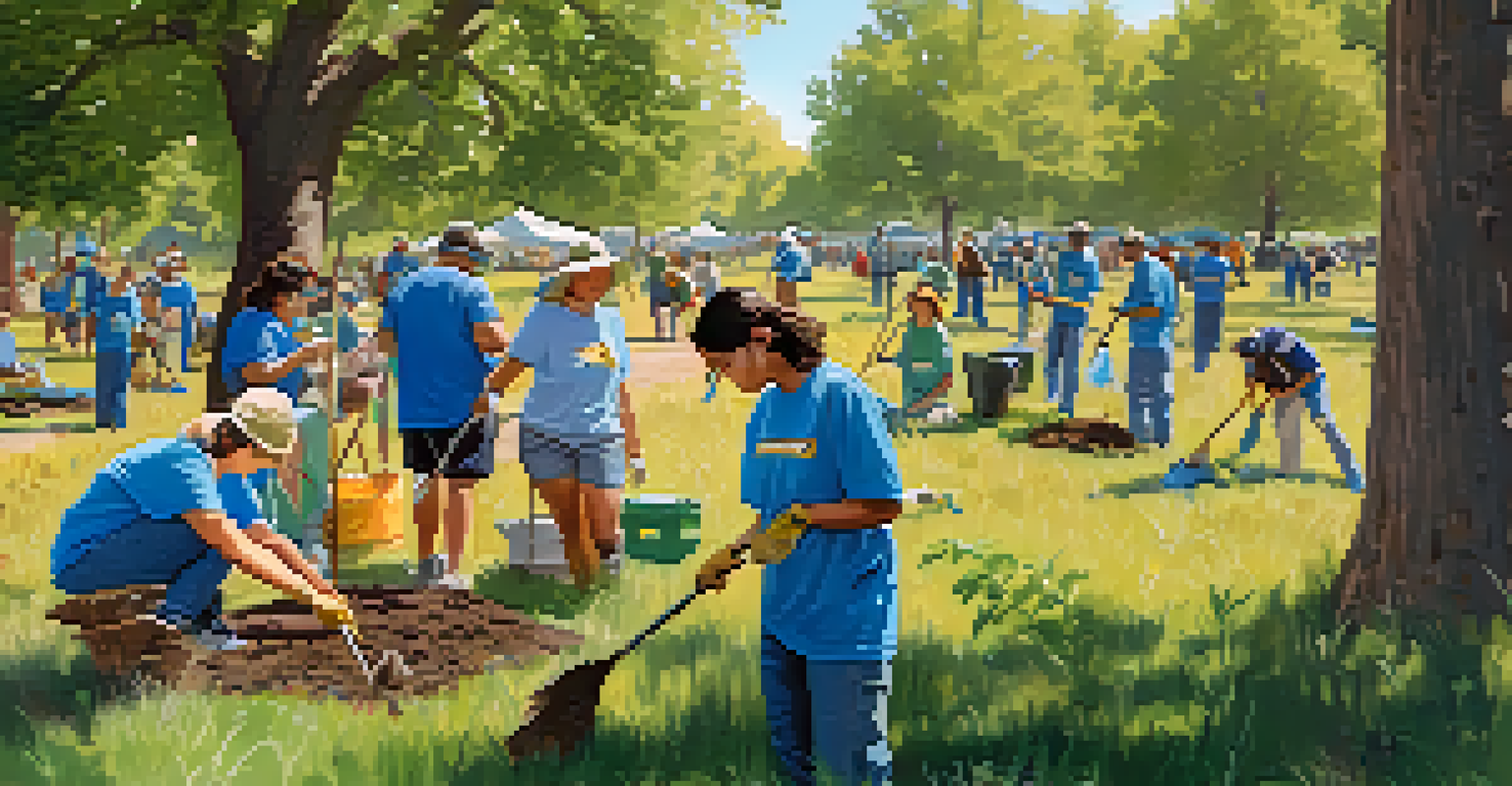Biodiversity Conservation Initiatives in Sacramento Region

Understanding Biodiversity and Its Importance
Biodiversity refers to the variety of life forms on Earth, including plants, animals, and microorganisms. It plays a crucial role in maintaining ecosystem balance and resilience. In the Sacramento region, rich biodiversity contributes to the health of local environments and supports vital services like clean air and water.
Biodiversity is the foundation for ecosystem services which are critical to our survival.
The Sacramento area is home to diverse habitats, including wetlands, forests, and grasslands. This diversity not only provides habitats for countless species but also strengthens the region's agricultural productivity. Protecting these natural resources can lead to sustainable development and a healthier environment for future generations.
Unfortunately, urbanization and climate change pose significant threats to biodiversity. Conservation initiatives in Sacramento aim to address these challenges by preserving natural habitats and promoting sustainable practices. Understanding the importance of biodiversity is the first step toward effective conservation efforts.
Key Conservation Organizations in Sacramento
Several organizations are dedicated to conserving biodiversity in the Sacramento region. Notable among them is the Sacramento Valley Conservancy, which works to protect vital habitats through land acquisition and restoration projects. Their efforts have led to the preservation of thousands of acres of natural landscapes, providing refuge for wildlife.

Another significant player is the California Native Plant Society, which focuses on the conservation of native flora. By promoting the planting of local species, they help restore ecosystems and enhance the resilience of local wildlife. Their educational programs also raise awareness about the importance of using native plants in landscaping.
Biodiversity's Vital Role
Biodiversity is essential for ecosystem balance, providing services like clean air and water in the Sacramento region.
Lastly, the American River Parkway Foundation contributes to biodiversity by maintaining and improving the parkway’s ecosystems. Volunteer efforts, such as river clean-up days, not only enhance the area's beauty but also protect critical habitats for various species. These organizations exemplify the community's commitment to biodiversity conservation.
Community Involvement in Conservation Efforts
Community involvement is essential for successful biodiversity conservation in Sacramento. Local residents are encouraged to participate in various initiatives, such as habitat restoration projects and educational workshops. Engaging the community fosters a sense of ownership and responsibility towards the environment.
The environment is where we all meet; where we all have a mutual interest; it is the one thing all of us share.
Programs like the Sacramento County's 'Adopt-a-Park' encourage citizens to take an active role in maintaining local parks and natural areas. Participants work together to remove invasive species, plant native vegetation, and clean up litter. These hands-on activities not only improve the local environment but also build strong community bonds.
Additionally, schools in the region often integrate environmental education into their curricula, inspiring the next generation to appreciate and protect biodiversity. By nurturing a culture of conservation, Sacramento's residents can ensure that their natural treasures are preserved for years to come.
Restoration Projects Enhancing Local Ecosystems
Restoration projects are a cornerstone of biodiversity conservation in Sacramento. These initiatives focus on rehabilitating degraded habitats to restore their ecological functions. For instance, the Cosumnes River Preserve is an example of successful wetland restoration, providing essential habitat for migratory birds and other wildlife.
Another key project is the restoration of the American River, which has seen significant improvements in water quality and habitat diversity. Efforts to remove debris, control invasive species, and replant native vegetation have revitalized this critical ecosystem. These projects not only benefit wildlife but also enhance recreational opportunities for the community.
Community Efforts Matter
Active community involvement in conservation initiatives helps foster a sense of responsibility and enhances local ecosystems.
Such restoration efforts often involve partnerships between government agencies, non-profits, and local stakeholders. By working collaboratively, these groups can pool resources and expertise, leading to more effective and sustainable outcomes. The positive impacts of these projects are felt by both people and the environment.
Educational Programs Raising Biodiversity Awareness
Education plays a vital role in promoting biodiversity conservation in the Sacramento region. Various programs aim to raise awareness about the importance of biodiversity and the steps individuals can take to protect it. One such initiative is the Sacramento Zoo's educational outreach, which teaches visitors about local wildlife and ecosystems.
Workshops and seminars hosted by organizations like the Sierra Club provide community members with valuable knowledge on sustainable practices. Topics may include water conservation, native gardening, and wildlife-friendly landscaping. By equipping residents with information, these programs empower them to make environmentally conscious decisions.
Schools also contribute to this educational effort by incorporating environmental science into their curricula. Field trips to local preserves allow students to experience nature firsthand and understand its significance. These educational experiences foster a lifelong appreciation for biodiversity and inspire future conservationists.
Challenges Facing Biodiversity Conservation
Despite numerous efforts, biodiversity conservation in Sacramento faces several challenges. Urban development continues to encroach on natural habitats, leading to habitat fragmentation and loss. As cities expand, wildlife is often displaced, making it difficult for species to thrive.
Climate change is another significant threat, altering habitats and affecting the timing of natural events like migration and blooming. Species that cannot adapt quickly enough may decline or face extinction. This urgency highlights the need for adaptive management strategies that can respond to changing environmental conditions.
Challenges in Conservation
Urbanization, climate change, and inconsistent funding present significant challenges to biodiversity conservation in Sacramento.
Moreover, funding for conservation initiatives can be inconsistent, limiting the scope and effectiveness of projects. Advocacy for increased public and private investment in conservation is essential to overcome these obstacles. By addressing these challenges head-on, Sacramento can work toward a more sustainable future for its biodiversity.
Future Directions for Biodiversity Conservation
Looking ahead, the future of biodiversity conservation in Sacramento hinges on collaboration and innovation. Developing comprehensive conservation plans that integrate urban development with habitat preservation is crucial. This approach can ensure that growth does not come at the expense of the region's natural heritage.
Incorporating technology into conservation efforts can also enhance effectiveness. Tools like remote sensing and geographic information systems (GIS) allow for better monitoring of habitats and species populations. These advancements can inform decision-makers and help prioritize conservation actions.

Finally, fostering a culture of sustainability within the community will be vital. By encouraging eco-friendly practices at home, in schools, and within businesses, residents can contribute to the overall health of local ecosystems. Together, these future directions can lead to a thriving biodiversity landscape in the Sacramento region.